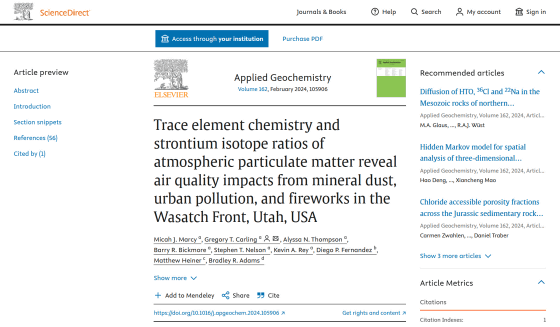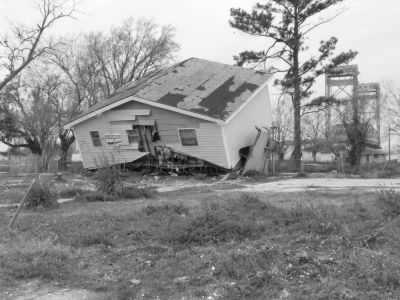Research shows that fireworks can worsen air pollution

Fireworks festivals are held all over Japan in the summer, and the sight of colorful, beautiful fireworks lighting up the night sky is a delight for many people. However, a paper published by a research team from
Trace element chemistry and strontium isotope ratios of atmospheric particulate matter reveal air quality impacts from mineral dust, urban pollution, and fireworks in the Wasatch Front, Utah, USA - ScienceDirect
https://www.sciencedirect.com/science/article/abs/pii/S0883292724000118

BYU study reveals fireworks' impact on air quality - BYU News
https://news.byu.edu/intellect/byu-study-reveals-fireworks-impact-on-air-quality
Fourth of July Celebration Fireworks Come With a Side of Dangerous Air Pollution : ScienceAlert
https://www.sciencealert.com/fourth-of-july-celebration-fireworks-come-with-a-side-of-dangerous-air-pollution
The Wasatch Front is an area of northern Utah bordering the Wasatch Mountains and home to more than 2.5 million urban residents. The area is a windward desert basin that frequently experiences air quality problems due to wind-blown dust, industrial emissions, and wildfire smoke.
The research team analyzed samples collected on the Wasatch Front from 2019 to 2021 and analyzed the elements that make up the pollutants. By examining the breakdown of pollutants, it is possible to determine what source the pollutants came from.
'We know that we inhale unhealthy particles during fireworks displays, dust storms, and when cities get covered in a winter inversion ,' said Greg Carling, a geologist at Brigham Young University. 'But what exactly is in those particles? Before this study, no one knew.'

The analysis revealed that the main causes of air pollution on the Wasatch Front were mineral dust blown by wind from the desert, smog caused by the winter inversion, and fireworks. According to the research team, the fireworks pollutants contained high levels of barium and copper, and the smog contained arsenic, cadmium, lead, and thallium.
Fireworks are generally prohibited along the Wasatch Front to prevent fires, but are permitted on New Year's Eve (December 31) and the Fourth of July, which is America's
While the health risks from fireworks are difficult to quantify, Carling warned, 'metals are very good at moving from the air to the soil to the water to food. And because they're persistent, they don't disappear, they just keep circulating in the system.'

The researchers urge people living along the Wasatch Front to avoid setting off personal fireworks, stick to municipally set ones, and avoid being outdoors during peak pollution times.
Carling said policymakers could use the study to restrict the types and quantities of fireworks used. 'It's great to see research leading to legislation that helps make a difference,' he said.
Related Posts:
in Science, Posted by log1h_ik







